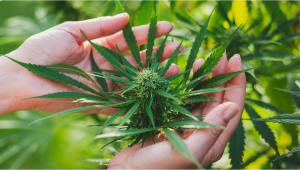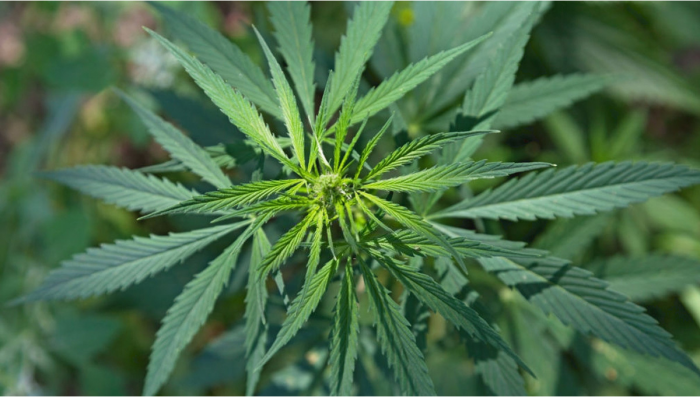Sativa vs Indica: What Is The Difference?

- 1. What is sativa?
- 2. What is indica?
- 3. What is ruderalis?
- 4. Hybrids
- 4. a. Sativa vs indica: structure
- 4. b. Sativa vs indica: leaves
- 4. c. Sativa vs indica: high
- 5. Sativa vs indica: nowadays
- 6. Cannabinoids and terpenes
- 7. In conclusion
If you are a cannabis consumer, you must have noticed that cannabis seeds are generally divided into three groups: Sativa, Indica, and Hybrids. For many years, Indica and Sativa has been a way to differentiate effects, while Sativas had a cerebral effect, Indicas a body effect, and hybrid a mix of both. In recent years studies have shown that on top of the role that Sativa and Indica play in the type of high that is delivered, terpenes also play a crucial role in determining the effects. Although the science is still up for debate, it is thought that the terpenes profile and the THC content work hand in hand to produce the specific effects that users associate with certain strains.
Or at least, that is the message that conventional wisdom professes. However, cannabis science is developing, and fast. As new research and discoveries emerge, it’s turning out that many of the things the cannabis industry has presented as truths are actually up for debate. The Indica and Sativa dichotomy is a perfect example of this. For decades, smokers, breeders, growers, and businesses alike have all come to the consensus that something about Sativa strains makes them produce an energizing effect, and something within Indica cultivars makes them more stoning and sedating. However, cannabis scientists are beginning to paint a picture that plant morphology (the way a plant looks and grows) doesn’t necessarily correlate to the effect we should expect when we smoke or consume them. Ultimately, Indica and Sativa are the titles of two different subtypes of cannabis—these two subtypes are classified based on their physical features, as opposed to their chemical composition.
Cannabinoids, terpenes, and other phytochemicals underpin the subjective effects of each unique cannabis cultivar. It turns out that some Indica varieties can have high levels of energizing terpenes, and Sativa strains can possess more stoning terpenes. Through selective breeding into the equation, it makes sense that breeders can create effects within plants that are not dictated by their morphology. With this in mind, let’s explore some of the differences between Indica and Sativa cannabis subtypes, both through the lens of conventional wisdom and recent science.
1. What is Sativa?
Sativas have been known for a long time as the recreational species before breeding got widely spread, Sativas were known for their high THC levels and strong euphoric cerebral effect. These species of cannabis were mostly found in tropical climates, including Mexico, Jamaica, and Colombia. They grow tall (up to 2m or more), skinny, with long thin fan leaves, and take longer than Indicas to fully mature, resulting in more growth, wispier buds, and more bud sites. Finding pure Sativa strains has become harder and harder as the years have gone by, but there are certain strains on the market that still make the claim to be 100% Sativa genetics.
2. What is Indica?
Indicas have been used as medicine and in religion since the beginning and are known as medicinal cannabis, they were widely used for their high CBD content and strong body relaxing and calming effects. These species were mostly found in harsh climates (with extremely cold winters and hot summers), in places like Afghanistan, India, Nepal, and Northern Pakistan (areas around the Hindu Kush mountain). Because of the harsh climates, they developed a short (between 1.3 - 1.5m) bushy, with wide fat fan leaves and a compact structure, taking less time to fully mature, developing fewer bud sites and denser buds.
3. What Is Ruderalis?
So, we've covered Sativa and Indica. For decades these two were thought of as the only two psychoactive species of cannabis. That was until the Ruderalis species were identified. Native to areas in Asia, Central/Eastern Europe, and specifically Russia and Siberia, these plants are naturally high in CBD and low in THC, are not dependent on light exposure to switch to the flowering growth stage.
While the true origins of auto-flowering cannabis plants are still under debate, one thing for certain is that we would not have these wonderful plants without the discovery of Ruderalis. Thanks to the inbuilt timer that Ruderalis plants possess, and through the determined work of breeders all around the globe we now have a huge range of auto-flowering strains. While the original Ruderalis strains had very low psychoactive effects, with years of cross-breeding there is now a smorgasbord of strains that possess the Ruderalis auto-flowering characteristics while sporting THC contents that can match the strongest photo-period plants available today.
4. Hybrids
Over the last years, breeders have been adjusting genetics to their preferences. This is made by crossing Indica, Sativa and Ruderalis genetics to create a wide variety of effects, colors, aromas, and flavors.

Because of this, genes have been diluted and almost all strains nowadays are hybrids (a mix of Sativa and Indica), even though they can be Sativa dominant or Indica dominant, they contain a combination of the genetics of two or three species of cannabis
Sativa Vs Indica: Structure
Hybrids develop different structures, you can have short strains with huge leaves or really tall plants with small leaves.
That solely depends on the characteristics of the genetics used to breed that specific strain.
Even though they are a mix, plants will develop according to their genes, so if a plant has a mix of 70% Sativa and 30% Indica, it’s most likely it will show more Sativa characteristics in its structure.
Sativa Vs Indica: Leaves
Because of the mix of different species, the very distinguished leaves can now be of all sizes and number of fingers, although most Sativa strains can still develop bigger leaves than Indicas, depending on the strain.

Sativa Vs Indica: High
The combination of different genes has also resulted in plants able to deliver a combination of cerebral and corporal effects, unlike pure Sativa and Indica landraces.
Hybrids can be Indica dominant or Sativa dominant and have both cerebral and corporal effects, although it depends on the percentage of genes (Indica or Sativa) they contain.
5. Sativa Vs Indica: Nowadays
Even though it’s quite hard to find a true pure Sativa or Indica, you can find Indica or Sativa dominant strains, this means that a hybrid has a mix of both genes and will have a more accentuated effect and structure depending on the genes it contains.
Because of this, the main difference between Indica and Sativa now is their structure.

This happens because throughout the years breeders have come up with unique cannabinoid and terpenes combinations that can result in a variety of effects and plant structures.
These hybrids can have Indica, Sativa and Ruderalis genes and their effect can’t be defined as strictly one of them (Indica or Sativa effect) because they are the result of a mix of 2 or 3 of the cannabis species.
6. Cannabinoids and Terpenes
Modern strains can have effects that don’t depend on a strains lineage, this is because as cannabis research advances, we have discovered that terpenes can alter the effect a strain has.

This along with the mix of Cannabinoids found in Sativa and Indicas has resulted in hybrid strains with a complete effect. Terpenes work similar to aromatherapy, they help your body absorb cannabinoids better and they help give a different effect to a strain, for example, citrus terpenes will deliver a more cerebral effect while earthy terpenes have a more relaxing effect.
Because of this, we were able to develop Indica strains that have a nice cerebral effect and Sativas that can deeply relax you. For example, our new Lemon Pie Auto is an Indica dominant strain that will still deliver a nice cerebral effect before relaxing you completely.
Or if you’re looking for a Sativa dominant strain, there’s our Gelato Auto. Even though it is Sativa dominant, it can leave you couch-locked if you smoke too much.
Even though it’s still used as a way to differentiate an effect (a Sativa or Indica effect), the Sativa vs Indica difference is now in the structure a plant will develop.
7. In Conclusion
It’s not incorrect to compare Sativa vs Indica effects, although we don’t know what the future holds and most certainly some things we are certain to know will change because the cannabis community is growing quickly, this allows cannabis enthusiasts to do research and learn more and more about the cannabis plant.
This post was most recently updated on March 21, 2022.











